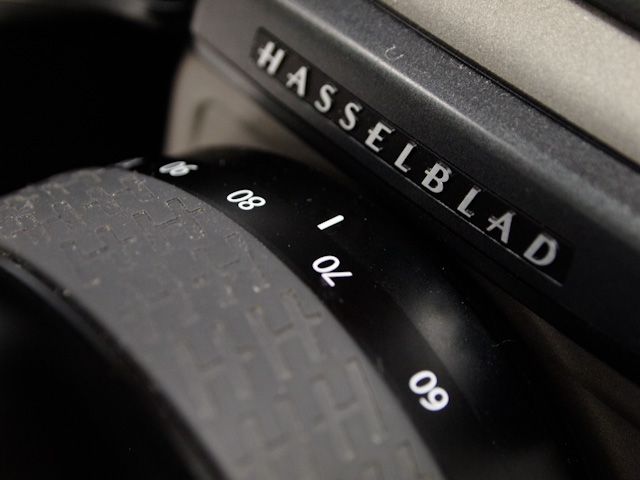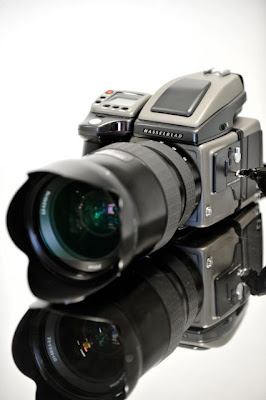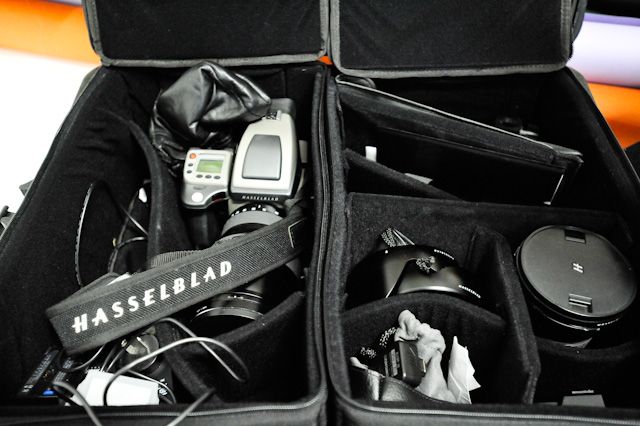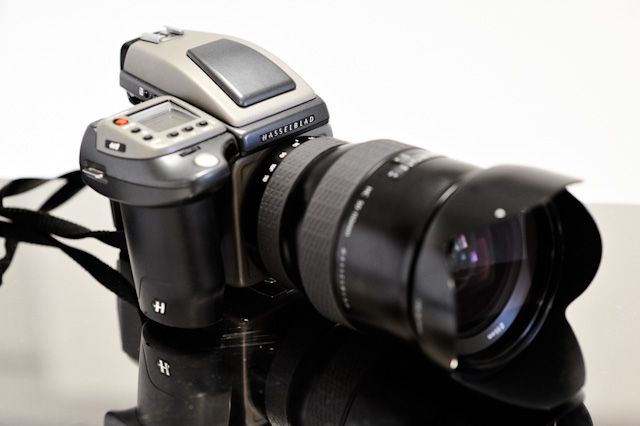If you like this post, help us share it
Hasselblad launched the H-System at Photokina in September 2002, built jointly in Sweden and Japan using lenses made by Fuji.
The Hasselblad H1 (review) departed from previous Hasselblad cameras in several respects. Hasselblad moved away from the traditional 6×6 format to 6×4.5 cm, and included autofocus lenses.
The camera was in large part manufactured by Fuji and featured Fuji-made lenses, leaf prisms and film backs, thus departing from Hasselblad’s long association with Zeiss; a hallmark of Hasselblad cameras since the 1950’s. Zeiss optics have a reputation second to none, and those for the Hasselblad series of cameras are exemplary.
The H1 had a number of other innovations, including:
-
replacement of the removable dark slide with a fold-out lever
-
inserts and backs that could accept both 120 and 220 film
-
automatic film advance
-
digital back integration
-
electronic leaf shutters with timing from 1/800 seconds down to 18 hours
Few years later, the arrival of H3D, effectively abandoned the fundamental principles of interchangeability and backward compatibility with this camera. The new H3D lenses and backs were no longer compatible with H1, H2 or V-series cameras
In 2007, Hasselblad introduced the H3DII product line.The H3DII systems have a higher level of integration between the camera and the image sensor than stand-alone digital camera backs, film digital backs are no longer compatible with the H3DII.
In 2009, Hasselblad introduced the H4D product line. The H4D series offers up to 60MP.
Here are some images of the H1 with HC 50-110mm f/3.5-5.6 (Courtesy to BoxTale Studio).



The digital back equipped on the H1 is of Phase One P25 with a resolution of 22MP, 16bit which is released in 2004. It offers a dynamic range of 12 f-stops, ISO range of 50 –800 and 2.2” 116Kpx TFT display.
Since 2007, Phase One has been updating their P series digital backs to P+ which have higher capture speeds, better response to long exposure times, and add Live Preview which allows the user to focus and compose on a monitor while tethered. Also a New high resolution LCD screen was implemented with better resolution and luminance.
| Model | Sensor Size | Resolution (Sensor+ Mode) | Active Pixels | ISO range (Sensor+ Mode) | Dynamic range | Frames per Second (Sensor+ Mode) | Lens conversion factor | Display | Storage | Released |
| P65+ | 53.9 x 40.4mm | 60.5 MP(15 MP), 16 bit | 8984 x 6732 | 50–800 (200-3200) | 12.5 f-stops | 1.0 / (1.4) | 1 | 2.2" 230k px TFT | CF | 2008 |
| P45+ | 49.1 x 36.8mm, | 39 MP, 16 bit | 7216 x 5412 | 50–800 | 12 f-stops | 0.67 | 1.15 | 2.2" 230k px TFT | CF | 2007 |
| P40+ | 43.9 x 32.9mm, | 40 MP (10 MP), 16 bit | 7320 x 5484 | 50–800 (200 – 3200) | 12 f-stops | 1.2 / (1.8) | 1.25 | 2.2" 230k px TFT | CF | 2009 |
| P30+ | 44.2 x 33.1mm, | 31.6 MP, 16 bit | 6496 x 4872 | 100–1600 | 12 f-stops | 0.8 | 1.25 | 2.2" 230k px TFT | CF | 2007 |
| P25+ | 48.9 x 36.7mm, | 22 MP, 16 bit | 5436 x 4080 | 50–800 | 12 f-stops | 0.67 | 1.15 | 2.2" 230k px TFT | CF | 2007 |
| P21+ | 44.2 x 33.1mm, | 18 MP, 16 bit | 4904 x 3678 | 100–800 | 12 f-stops | 1.25 | 1.25 | 2.2" 230k px TFT | CF | 2007 |
| P20+ | 36.9 x 36.9mm, | 16 MP, 16 bit | 4080 x 4080 | 50–800 | 12 f-stops | 0.87 | 1.5 | 2.2" 230k px TFT | CF | 2007 |

 Hasselblad H1 Hasselblad H1 |
 Phase One P25 Digital Back Phase One P25 Digital Back |

Where can I find the equipment seen on this site?
If you find this site useful and planning to purchase any of the equipment seen on this site, please show your support by purchasing your photo equipment at B&H Photo Video, or through any of the affiliate links seen on this site.


